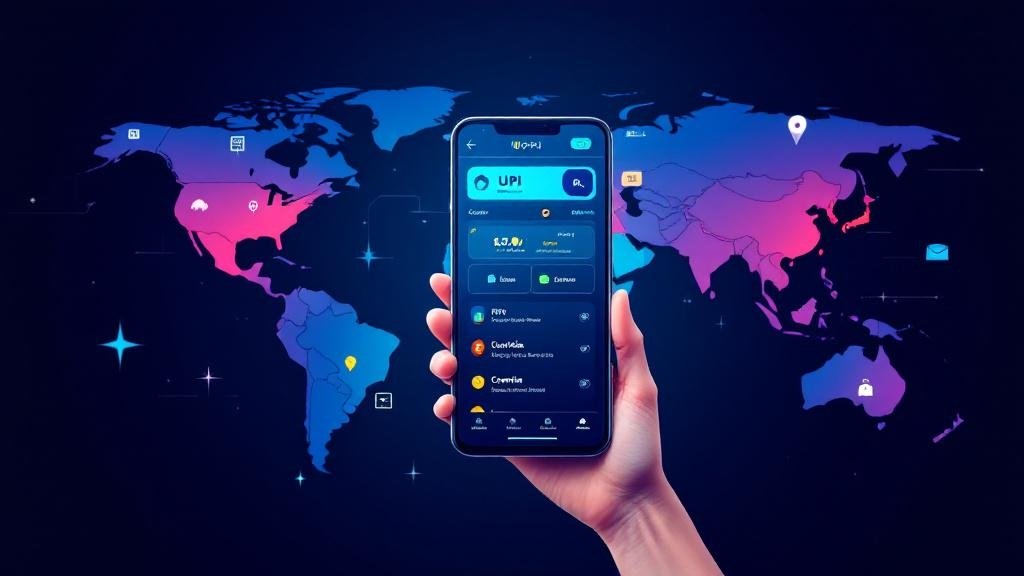Discover how mobile banking is transforming financial literacy by empowering users with digital tools and apps to manage their finances. Learn about mobile financial education, apps, and the importance of digital financial literacy.
Introduction: The Power of Mobile Banking in Financial Literacy
In today’s digital world, mobile banking and financial literacy are more connected than ever before. With the rise of smartphones and mobile applications, managing finances has become more accessible, convenient, and, most importantly, empowering. Whether you are someone looking to better understand budgeting or an individual aiming to make smarter investment choices, mobile banking has a tool or app for everyone.
Mobile banking is not just about transferring funds or checking balances—it plays a significant role in educating users about financial management. This blog explores the power of mobile banking education and how it fosters financial literacy through apps, tools, and digital financial services.
What is Financial Literacy in the Context of Mobile Banking?
Financial literacy refers to the understanding and application of financial principles such as budgeting, saving, investing, and managing debt. In today’s world, with the increasing reliance on digital banking, financial literacy has evolved to include knowledge about using mobile banking platforms, digital wallets, and mobile payments for everyday financial management.
Mobile banking helps people learn how to manage their finances through simple and easy-to-understand features. From basic functions like setting up savings accounts to advanced tools for wealth management, mobile banking provides users with access to financial education in the palm of their hands.
How Mobile Banking Promotes Financial Empowerment
H2: Mobile Banking for Financial Empowerment
With the integration of financial literacy into mobile banking, users can now take control of their financial decisions like never before. Let’s break down the key benefits:
H3: 1. Budgeting Made Simple
Mobile banking offers intuitive features for creating and tracking budgets. Many banking apps categorize spending, helping users understand where their money goes. This promotes financial planning and makes it easier for people to save and make informed decisions about their money.
Example: Apps like Mint or YNAB (You Need A Budget) allow users to set up personalized budgets based on their income, set financial goals, and track their progress. These apps send alerts when users exceed budget categories, teaching them the value of managing spending effectively.
H3: 2. Tools for Financial Planning
Many mobile banking platforms offer tools for setting goals, monitoring investments, and tracking financial growth. These tools help people plan for the future, whether it’s for retirement, buying a home, or managing daily expenses.
Example: Digital banking apps such as Chime or Revolut provide tools that automate savings and investments. Some apps even allow you to round up your purchases to the nearest dollar and invest the difference in a retirement or savings fund.
H3: 3. Learning About Digital Financial Literacy
Through mobile financial literacy tools, users can gain essential knowledge about personal finance. Educational apps and platforms offer tips, articles, and videos on various financial topics, empowering users to make informed decisions about managing debt, saving, and investing.
Example: LearnVest, a financial planning app, combines financial literacy with tools for budgeting and saving, offering easy-to-understand lessons on personal finance.
Financial Literacy Programs and Mobile Banking Awareness
H2: Financial Literacy Programs for Mobile Users
Access to financial literacy education via mobile banking apps has created an opportunity to break down barriers to financial education, especially for individuals in underserved communities. Financial inclusion and financial education via mobile apps are making it possible for everyone, regardless of their background, to gain knowledge and skills needed to navigate the complex financial world.
H3: Mobile Banking for Financial Inclusion
Mobile banking for financial inclusion refers to using digital banking services to offer financial tools and education to people in rural or underserved areas. Many individuals who lack access to traditional banking systems can now open accounts, learn about managing money, and access financial resources directly through their smartphones.
Example: In countries like Kenya, M-Pesa is a groundbreaking mobile banking platform that provides users with a range of financial services, including digital wallets, savings, and loans, making banking accessible even to those without access to physical banks.
H3: Mobile Banking Awareness Campaigns
To ensure that users are well-informed about their financial options, many mobile banking platforms are launching awareness campaigns about financial literacy. These initiatives educate users on the features available to them, such as setting up savings accounts, managing credit, and using digital payments securely.
Example: Standard Chartered has been promoting financial literacy in digital banking through its #Futuremakers initiative, which focuses on teaching financial management to youth and communities in need.
Mobile Financial Tools: A Beginner’s Guide
H2: Mobile Banking for Beginners
If you’re new to mobile banking, you may feel overwhelmed by all the available tools and features. Don’t worry! Here’s a simple guide on how you can leverage mobile financial literacy tools to your advantage.
H3: 1. Understanding Mobile Payments
One of the simplest ways to start learning about mobile banking is through mobile payments. Apps like Google Pay and Apple Pay enable users to make secure transactions using their phones. Learning how to use these services builds a foundation for understanding the broader scope of digital banking.
H3: 2. Getting Started with Digital Wallets
Digital wallets like Paytm and PhonePe allow users to store money digitally for easy use in transactions. These tools not only simplify the buying process but also teach users the value of managing funds electronically, making it easier to track spending and plan budgets.
Example: Paytm has evolved from a simple payment service to a full-fledged financial platform, offering savings accounts, insurance products, and investments, all through the mobile app.
H3: 3. Using Financial Education Apps
Many apps are now offering free or paid financial literacy programs for mobile users. These platforms offer self-paced courses on budgeting, saving, investing, and financial planning, empowering users with the knowledge to make better financial decisions.
Example: Apps like Personal Capital or PocketGuard allow you to track spending, analyze your financial health, and access financial tips that can help you optimize your savings.
Mobile Banking and Wealth Management Education
H2: The Role of Mobile Banking in Wealth Management
Mobile banking and wealth management education are becoming increasingly important as the world of finance goes digital. With the right tools, anyone can begin managing their wealth and making smarter financial choices, even with modest starting funds.
H3: Financial Planning through Mobile Apps
Mobile apps make it easy to access financial planners who provide personalized advice. These tools are particularly useful for those new to managing their wealth and need guidance on where to start.
Example: Platforms like Betterment or Wealthfront use mobile apps to offer automated financial planning and personalized advice, making it easier for people to start investing even with small amounts.
H3: Mobile Banking Security and Financial Knowledge
Security is a top concern when it comes to digital banking. As mobile banking grows, understanding how to use these services safely becomes an essential part of financial education. Apps and platforms educate users on topics such as mobile banking security, how to safeguard personal data, and how to protect themselves against fraud.
Example: Bank of America provides educational resources and security tips directly within their mobile app, offering real-time notifications for any unusual account activity.
Frequently Asked Questions (FAQs)
H2: FAQs About Mobile Banking and Financial Literacy
Q1: How can mobile banking help me improve my financial literacy?
A1: Mobile banking apps provide a wide range of tools and resources, such as budgeting tools, educational articles, and investment options, which can help you become more financially literate by teaching you how to manage your money and plan for the future.
Q2: What are the best financial literacy apps available?
A2: Some of the best financial literacy apps include Mint, You Need A Budget (YNAB), and Personal Capital. These apps offer a variety of features, from budgeting and expense tracking to investment and retirement planning.
Q3: Is mobile banking secure for financial transactions?
A3: Yes, mobile banking is generally secure when you use apps from trusted institutions and follow basic security practices, such as setting strong passwords, enabling two-factor authentication, and avoiding public Wi-Fi for transactions.
Q4: How can mobile banking promote financial inclusion?
A4: Mobile banking can promote financial inclusion by providing financial services to individuals who may not have access to traditional banks, particularly in rural or underserved areas, allowing them to save, invest, and manage their money via mobile apps.
Q5: What is financial empowerment through mobile banking?
A5: Financial empowerment through mobile banking refers to giving users the tools and knowledge to take control of their financial decisions, such as budgeting, saving, and investing, all through the convenience of mobile apps.
Q6: Can mobile banking help with financial planning?
A6: Yes, mobile banking apps often include financial planning tools that help users set goals, track spending, and manage investments, allowing for better control over their financial futures.
Q7: How do mobile financial tools cater to beginners?
A7: Mobile financial tools, like budgeting apps, digital wallets, and financial planning apps, are designed with user-friendly interfaces to cater to beginners, providing simple steps to help them understand and manage their finances effectively.








Comments (0)